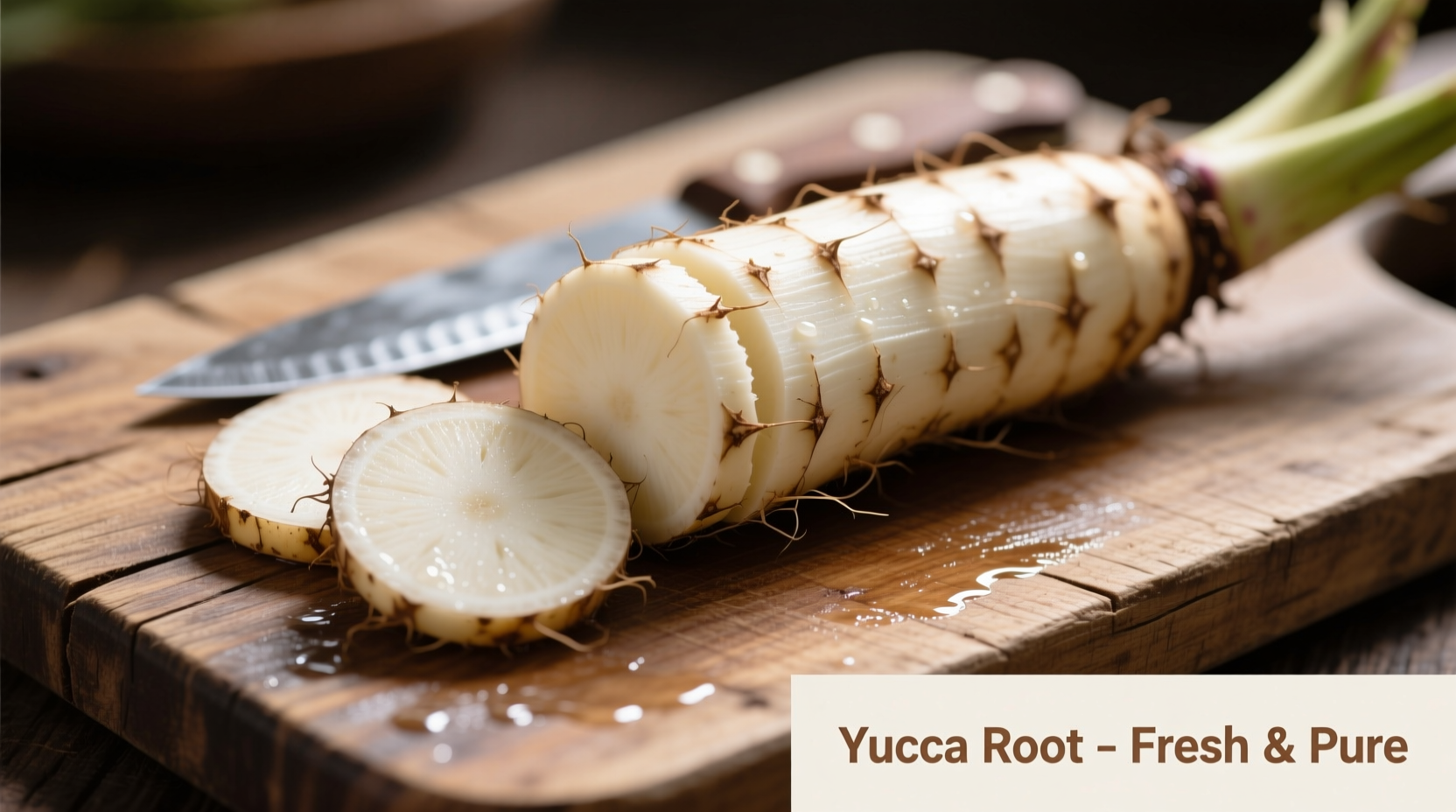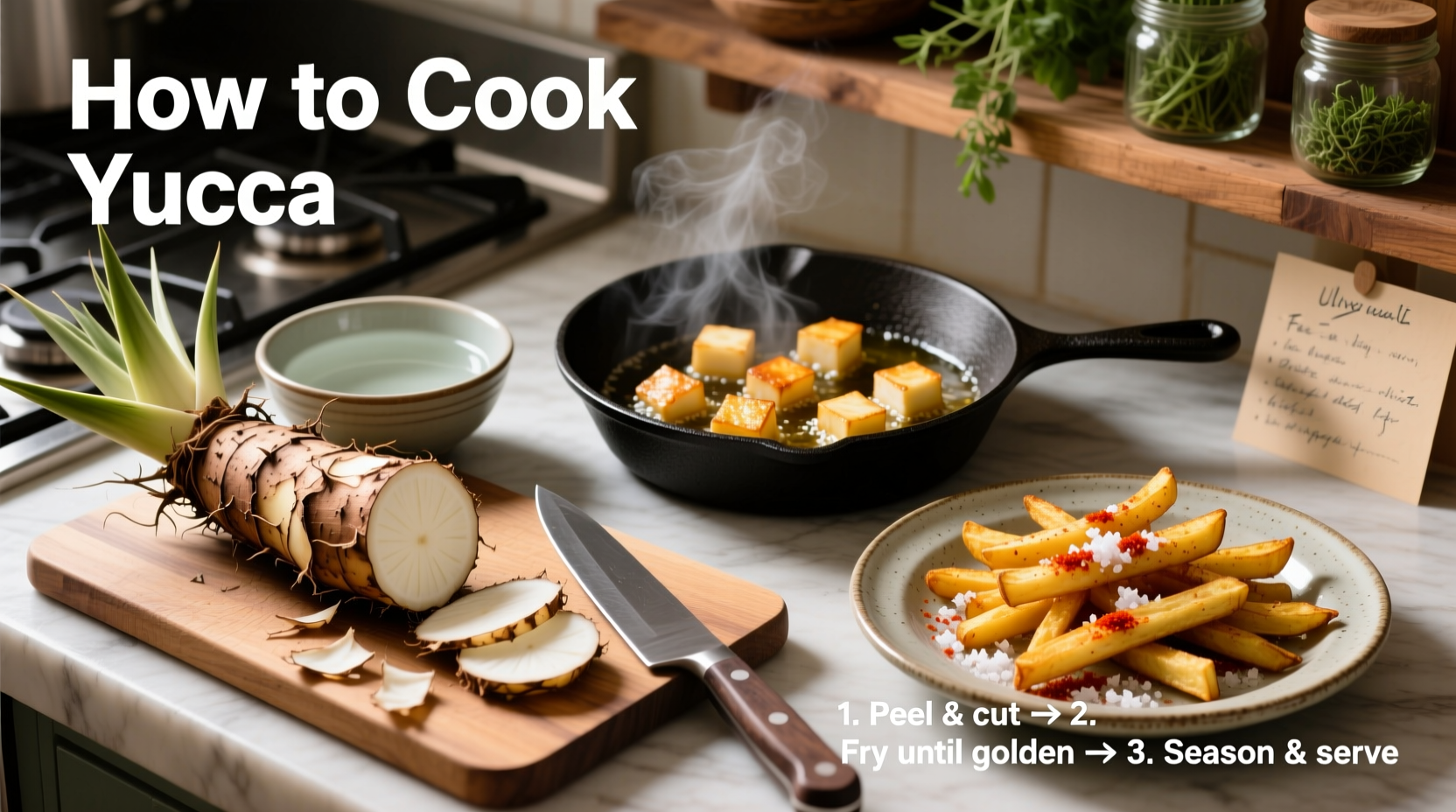Why Proper Yucca Preparation Matters for Safety
Yucca, also known as cassava or manioc, contains naturally occurring cyanogenic glycosides that can be toxic when consumed raw. According to the University of Florida Institute of Food and Agricultural Sciences, proper preparation reduces these compounds to safe levels. There are two main varieties:
| Type | Cyanide Content | Preparation Required | Common Regions |
|---|---|---|---|
| Sweet Yucca | Lower (50-100mg/kg) | Peeling and thorough cooking | Caribbean, Central America |
| Bitter Yucca | Higher (100-400mg/kg) | Peeling, soaking, and extended cooking | South America, Africa |
The Food and Agriculture Organization (FAO) confirms that proper cooking eliminates over 90% of cyanogenic compounds, making yucca safe for consumption. This root vegetable provides valuable carbohydrates and is a dietary staple for over 500 million people worldwide.
Your Yucca Preparation Timeline: From Raw to Ready
Follow this precise sequence to ensure safety and optimal texture. Rushing or skipping steps can result in bitter, unsafe yucca:
- Selection (2 minutes): Choose firm roots without soft spots or mold. Smaller roots (1-2 inches diameter) typically have sweeter flesh.
- Peeling (5-7 minutes): Use a sharp chef's knife to remove the thick, waxy outer skin and brown inner layer. Cut both ends first, then slice lengthwise to access the flesh.
- Cutting (3 minutes): Slice into 2-3 inch chunks. Uniform pieces ensure even cooking.
- Soaking (Optional but recommended for bitter varieties): Submerge in cold water for 15-30 minutes to draw out additional compounds.
- Cooking (20-30 minutes): Boil until fork-tender. This critical step neutralizes toxins.

Step-by-Step Cooking Methods
Boiling: The Essential Foundation
Boiling is the most reliable method for safely preparing yucca. This technique works for both sweet and bitter varieties:
- Place peeled, cut yucca in a large pot
- Cover with cold water by 1 inch (adding salt is optional)
- Bring to a rolling boil over high heat
- Reduce heat to maintain gentle simmer
- Cook for 20-30 minutes until fork-tender
- Drain thoroughly before serving or using in recipes
Pro tip: Save the cooking water! Many Latin American cultures use yucca water to make traditional beverages or as a base for soups. The University of Illinois Extension confirms this water contains beneficial starches that thicken liquids naturally.
Frying: Crispy Yucca Fries (Mandioca Frita)
For authentic crispy yucca fries that maintain their shape:
- Boil yucca chunks until just tender (15-20 minutes)
- Cool completely (refrigerate for 1 hour for best results)
- Heat oil to 325°F (163°C) in deep fryer or heavy pot
- Fry in batches for 4-5 minutes until golden
- Drain on paper towels and season immediately
Unlike potatoes, yucca contains more starch and less sugar, preventing excessive browning. This makes it ideal for achieving that perfect golden crust without burning.
Troubleshooting Common Yucca Problems
When Yucca Turns Out Bitter
If your cooked yucca tastes bitter, it indicates incomplete toxin removal. This typically happens when:
- You skipped the peeling step or didn't remove enough of the inner brown layer
- Cooking time was insufficient (under 20 minutes)
- Using bitter variety without adequate soaking
Solution: Return to boiling water and cook for additional 10-15 minutes. Taste a small piece after cooling to check bitterness. If still bitter, discard and start over with proper preparation.
Texture Issues: Mushy vs. Undercooked
Yucca's dense structure requires precise timing:
- Mushy yucca: Overcooking (typically beyond 35 minutes)
- Undercooked yucca: Insufficient cooking time or uneven pieces
Professional chefs recommend testing with a fork at 20 minutes. Properly cooked yucca should offer slight resistance but not be hard in the center.
Traditional Yucca Dishes to Try
Pan de Yuca (Cheese Bread)
This popular Ecuadorian street food combines boiled yucca with cheese, eggs, and tapioca starch:
- Mash 2 cups boiled yucca until smooth
- Mix with 1 cup grated cheese, 2 eggs, and 1/2 cup tapioca starch
- Form into small balls and bake at 375°F (190°C) for 20-25 minutes
Yucca with Mojo Sauce
A Cuban classic featuring boiled yucca served with citrus-garlic sauce:
- Boil yucca until tender and drain
- Prepare mojo by combining 1/4 cup olive oil, 1/4 cup orange juice, 2 minced garlic cloves, and 1 tsp cumin
- Pour warm sauce over sliced yucca just before serving
Storage and Safety Guidelines
Raw yucca roots can be stored unpeeled in a cool, dark place for up to 1 week. Once cooked, follow these food safety practices:
- Refrigerate cooked yucca within 2 hours
- Store in airtight container for 3-5 days
- Freeze cooked and cooled yucca for up to 3 months
- Always reheat to internal temperature of 165°F (74°C)
The USDA Food Safety and Inspection Service emphasizes that proper storage prevents bacterial growth, especially important for starchy vegetables like yucca which can support pathogen growth when left at room temperature.











 浙公网安备
33010002000092号
浙公网安备
33010002000092号 浙B2-20120091-4
浙B2-20120091-4